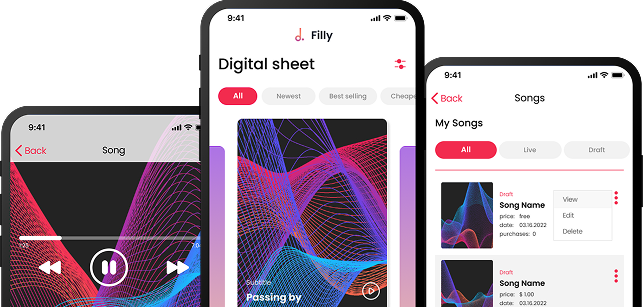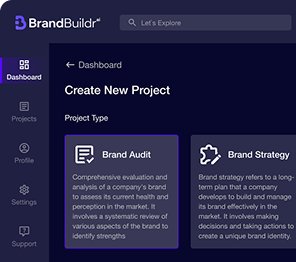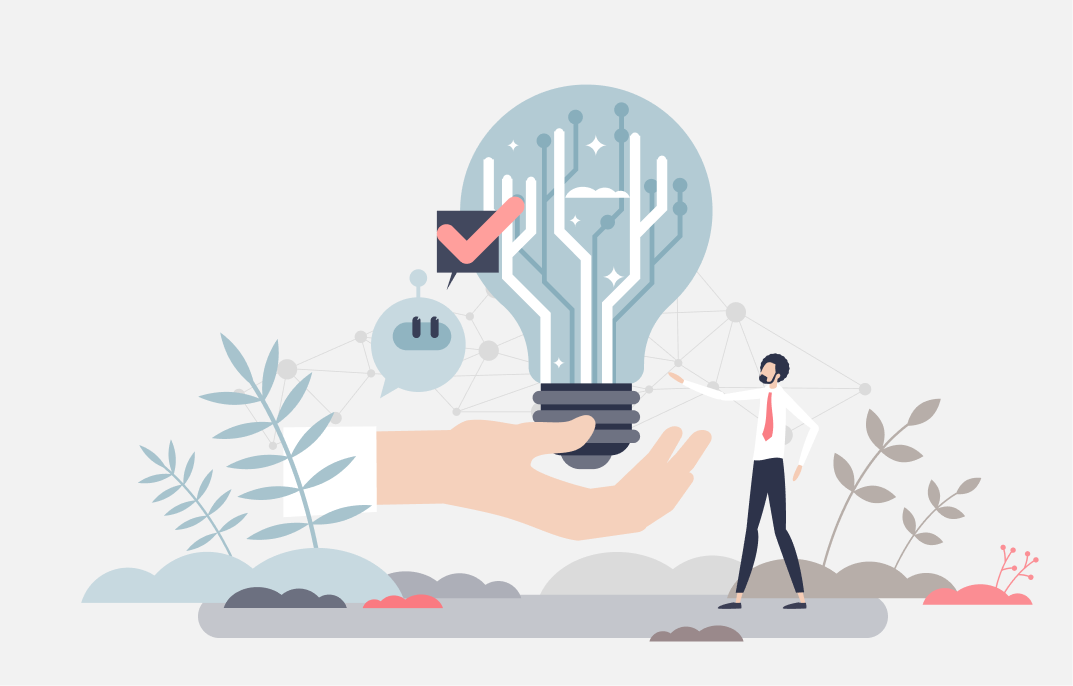The health tech sector is undergoing rapid transformation, bringing unprecedented improvements to patient care, diagnosis, and treatment. From artificial intelligence (AI) to wearable devices, the latest technological advancements are reshaping how healthcare is delivered, making it more personalized, efficient, and accessible.
As we move into 2025, several innovations stand out for their potential to revolutionize patient care. This article explores the top healthtech innovations driving these changes, highlighting how they are improving outcomes and streamlining healthcare processes.

1. Artificial Intelligence and Machine Learning in Healthcare
Artificial intelligence (AI) and machine learning (ML) have become essential tools in healthcare, offering transformative capabilities in diagnostics, treatment planning, and patient monitoring. AI-powered systems can analyze vast amounts of medical data quickly, identifying patterns that may be missed by human eyes.
AI in Diagnostics
AI has made significant strides in diagnostic imaging, particularly in radiology and pathology. AI algorithms can now analyze medical images such as X-rays, MRIs, and CT scans with remarkable accuracy, sometimes outperforming human doctors in early-stage cancer detection. For example, AI systems developed by companies like Google Health have demonstrated a reduction in false positives and false negatives in breast cancer screenings.
Additionally, AI is being used to predict the likelihood of diseases based on patient data. By analyzing electronic health records (EHRs) and genetic information, AI can help identify patients at risk for conditions such as diabetes, heart disease, and Alzheimer's.
AI-Driven Drug Discovery
AI is also accelerating the process of drug discovery by identifying potential drug candidates faster and more efficiently. AI algorithms can simulate molecular interactions, predict the effectiveness of new compounds, and optimize the drug design process, reducing the time and cost of bringing new medications to market.
Companies like Insilico Medicine are leveraging AI to develop novel drugs for conditions that currently have limited treatment options. This approach is expected to significantly impact personalized medicine, enabling doctors to tailor treatments based on an individual’s unique genetic makeup.
.avif)
2. Telemedicine and Remote Patient Monitoring
The COVID-19 pandemic accelerated the adoption of telemedicine, and it has now become a critical part of healthcare delivery. In 2025, telemedicine is continuing to evolve, with more advanced tools and platforms being introduced to improve patient outcomes and reduce healthcare costs.
Telemedicine Platforms
Telemedicine allows patients to consult healthcare professionals remotely via video calls, chat, or mobile apps, eliminating the need for in-person visits. This technology is particularly valuable for managing chronic diseases, mental health conditions, and routine follow-ups. It enhances accessibility for patients living in rural or underserved areas and improves convenience for those with mobility challenges.
In 2025, we see the rise of more comprehensive telemedicine platforms that integrate AI chatbots for initial triage, appointment scheduling, and virtual health assistants that guide patients through their treatment plans. These platforms also feature real-time access to patient data, allowing healthcare providers to monitor vital signs, adjust treatments, and offer remote consultations without requiring the patient to visit the clinic.
Remote Patient Monitoring
Remote patient monitoring (RPM) is a game-changer for chronic disease management. Devices such as wearable fitness trackers, smartwatches, and connected home health devices monitor vital signs like heart rate, blood pressure, and glucose levels in real time. The data is sent to healthcare providers, who can then adjust treatment plans as needed.
Innovations in wearable technology, such as continuous glucose monitors (CGMs) for diabetes patients or cardiac monitors for those with heart conditions, allow for better management of chronic diseases. These devices provide real-time alerts to both patients and physicians, preventing health crises and reducing hospital admissions.
3. Wearable HealthTech and IoT Devices
Wearable devices have seen significant advancements, with a wide range of health-monitoring gadgets now available to consumers. These devices are integral to the Internet of Medical Things (IoMT) ecosystem, where interconnected devices continuously monitor and report on a patient’s health status.
Next-Generation Wearable Devices
The latest generation of wearable devices goes beyond simple fitness tracking, offering medical-grade monitoring for conditions such as cardiovascular diseases, diabetes, and sleep apnea. For instance, Apple’s latest Apple Watch models offer ECG monitoring, blood oxygen level measurements, and fall detection, features that have been integrated to enhance patient safety and provide real-time data to healthcare providers.

Smart Implants and Biosensors
In addition to wearables, implantable medical devices are on the rise. These smart implants can monitor internal physiological conditions and send data to healthcare providers wirelessly. For example, heart failure patients can benefit from devices like CardioMEMS, a sensor implanted in the pulmonary artery that monitors pressure levels, allowing doctors to adjust treatments in real-time.
Biosensors, such as those developed by BioIntelliSense, offer continuous monitoring of vital signs and activity, providing a detailed picture of a patient’s health over time. This data helps in early disease detection, continuous monitoring, and improved patient outcomes.

4. Blockchain for Secure Health Data Management
Data security and privacy are paramount in healthcare, and blockchain technology is gaining traction as a solution for managing and securing patient health information. The decentralized nature of blockchain ensures that patient data is stored securely and can only be accessed by authorized individuals.
Blockchain in EHRs and Data Sharing
Blockchain is particularly useful in electronic health records (EHR) management, providing a secure and transparent way for patients to control their data. Patients can grant or revoke access to their health records as needed, ensuring privacy while allowing for seamless sharing of data between healthcare providers.
Startups like Medicalchain and BurstIQ are working on blockchain-based platforms that store medical records, ensuring data integrity and preventing unauthorized access. This technology is especially beneficial for sharing patient data across multiple healthcare providers, making transitions between doctors and specialists smoother and more secure.
Reducing Healthcare Fraud
Blockchain can also play a role in combating healthcare fraud. By creating immutable records of medical transactions, including prescriptions, treatments, and billing, blockchain ensures that healthcare providers and insurers have an accurate, tamper-proof history of patient care. This reduces the risk of fraudulent claims and unauthorized modifications to patient records.
5. 3D Printing and Personalized Medical Devices
3D printing technology is revolutionizing the production of medical devices, prosthetics, and even tissue engineering. The ability to create custom-fit devices tailored to individual patients offers significant advantages in terms of comfort, functionality, and cost-effectiveness.
Custom Prosthetics and Implants
3D printing allows for the rapid production of customized prosthetics and implants. For example, patients requiring joint replacements or dental implants can now receive tailor-made solutions that match their anatomy perfectly, improving outcomes and reducing recovery time.
Companies like Materialise are at the forefront of this innovation, providing software solutions and 3D printing services for the healthcare industry. These custom solutions improve patient comfort and performance, particularly in orthopedic and dental care.
Bioprinting and Tissue Engineering
Perhaps one of the most exciting applications of 3D printing in healthcare is bioprinting, where living cells are printed layer by layer to create tissue structures. While fully functional 3D-printed organs are still in the research phase, bioprinting has already been used to create skin grafts, blood vessels, and cartilage.
In 2025, we expect to see further advancements in bioprinting, bringing us closer to the goal of creating fully functional, patient-specific organs for transplantation. This could address the global shortage of donor organs and reduce the risk of organ rejection.

6. Robotics and Automation in Surgery
Robotics and automation are making surgery more precise, less invasive, and safer. Robotic surgery platforms like the da Vinci Surgical System have been in use for several years, but continuous improvements are pushing the boundaries of what these systems can achieve.
Robot-Assisted Surgery
Robot-assisted surgery allows surgeons to perform complex procedures with greater precision than traditional methods. These systems are particularly useful in delicate operations, such as neurosurgery or cardiac surgery, where precision is crucial.
In 2025, the integration of AI with robotics is expected to improve surgical outcomes further. AI-powered robots can assist surgeons by analyzing real-time data during the procedure, predicting complications, and suggesting optimal surgical approaches.
Automating Routine Tasks
Beyond surgery, automation is being applied to other areas of healthcare, such as pharmacy dispensing and lab testing. Automated systems reduce human error, increase efficiency, and free up healthcare professionals to focus on more critical tasks.
7. Virtual Reality and Augmented Reality in Medical Training and Treatment
Virtual reality (VR) and augmented reality (AR) are gaining ground in medical education and treatment. These immersive technologies provide a hands-on experience for medical professionals and improve patient outcomes through better training and visualization.
VR for Medical Training
VR is transforming how medical professionals are trained. With VR, students and surgeons can practice procedures in a simulated environment, improving their skills before performing on real patients. Platforms like Osso VR provide realistic surgical simulations, enhancing medical education and reducing the risks associated with training in live environments.
AR in Surgery
Augmented reality overlays digital images onto the physical world, allowing surgeons to visualize a patient’s anatomy in real-time. This can be particularly useful in complex procedures, where seeing through tissue and bone is necessary for accurate incisions and placements. AR tools such as Microsoft’s HoloLens are already being used in operating rooms to guide surgeons through intricate procedures.
Conclusion
The healthcare industry is on the cusp of a revolution, driven by technological innovations that promise to enhance patient care, streamline workflows, and improve medical outcomes. From AI-driven diagnostics and telemedicine to 3D printing and robotics, the future of healthcare looks brighter than ever.
As we look ahead to 2025 and beyond, these healthtech innovations will continue to transform the way we approach medicine, delivering more personalized, efficient, and effective care. Embracing these technologies will unlock new opportunities for improved patient outcomes and enhanced operational efficiencies across healthcare systems. However, as these innovations continue to evolve, it will be essential for healthcare providers, policymakers, and tech companies to collaborate in addressing challenges such as data privacy, equitable access to technology, and ethical considerations around AI-driven care. By doing so, the healthcare ecosystem can ensure that these transformative tools are used responsibly, ultimately leading to a future where high-quality, patient-centric care is accessible to all.
FAQ
What are the most impactful HealthTech innovations in 2025?
Key innovations include AI-powered diagnostics, remote patient monitoring, wearable health devices, telemedicine platforms, and personalized treatment solutions driven by data analytics.
How is artificial intelligence improving patient care?
AI enhances diagnostics, predicts health risks, supports clinical decision-making, and automates administrative tasks. This leads to faster diagnoses, more accurate treatments, and improved care efficiency.
What role does remote patient monitoring play in modern healthcare?
Remote patient monitoring allows clinicians to track patient health data in real time outside clinical settings. It improves chronic disease management, reduces hospital readmissions, and enables proactive care.
How are wearable devices influencing patient engagement?
Wearable devices empower patients to actively manage their health by tracking vital signs, physical activity, and sleep patterns. This data supports preventive care and more personalized treatment plans.
How is HealthTech improving access to healthcare services?
Telemedicine and digital health platforms remove geographic barriers, allowing patients to access care remotely. This is especially valuable for rural areas and underserved populations.
What challenges accompany rapid HealthTech innovation?
Challenges include data privacy and security, regulatory compliance, system interoperability, and ensuring equitable access. Addressing these issues is critical to delivering safe and sustainable patient care solutions.
Heading 1
Heading 2
Heading 3
Heading 4
Heading 5
Heading 6
Lorem ipsum dolor sit amet, consectetur adipiscing elit, sed do eiusmod tempor incididunt ut labore et dolore magna aliqua. Ut enim ad minim veniam, quis nostrud exercitation ullamco laboris nisi ut aliquip ex ea commodo consequat. Duis aute irure dolor in reprehenderit in voluptate velit esse cillum dolore eu fugiat nulla pariatur.
Block quote
Ordered list
- Item 1
- Item 2
- Item 3
Unordered list
- Item A
- Item B
- Item C
Bold text
Emphasis
Superscript
Subscript





















.avif)



.avif)

.avif)


